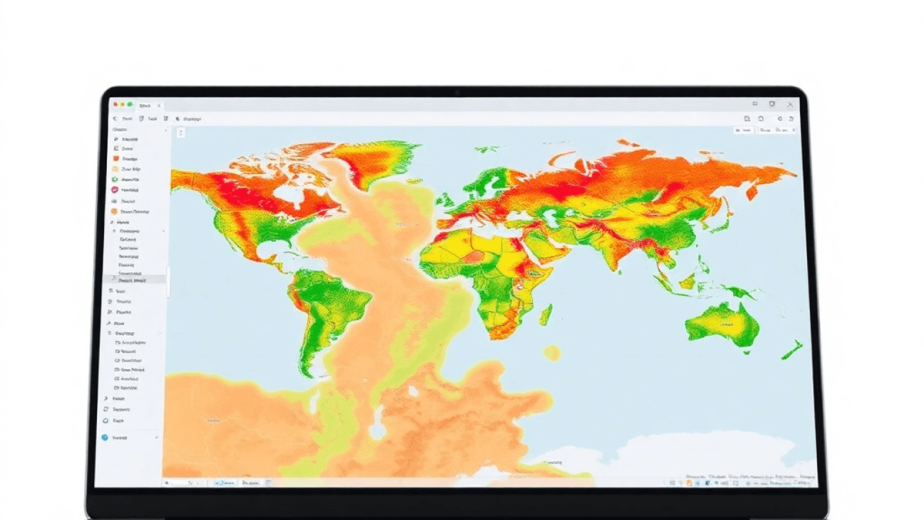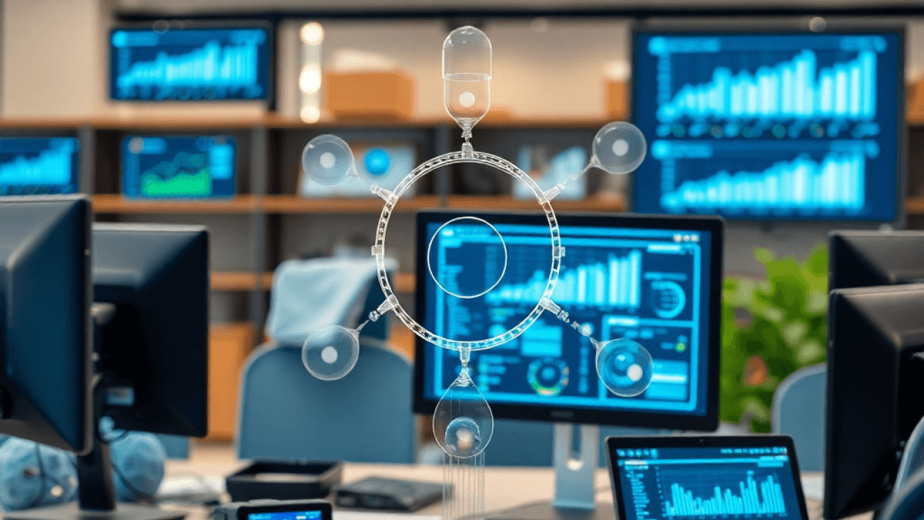Introduction
3D visualization is the process of creating graphical representations of three-dimensional objects or environments. This technology is crucial in critical infrastructure maintenance, where reliable and safe operations are essential.
The importance of maintaining infrastructure systems like bridges, roads, and utilities cannot be emphasized enough. These systems require constant monitoring to ensure they function properly and remain safe. Ignoring them can result in catastrophic failures and significant financial losses.
The benefits of using 3D visualization for infrastructure maintenance include:
- Better understanding of complex structures for stakeholders
- Clear communication through detailed visual models
- Smarter decision-making based on accurate data representation
By incorporating 3D visualization into their maintenance strategies, organizations can streamline operations and improve safety measures effectively.
1. Better Visualization and Communication
3D visualization is essential for representing complex infrastructure projects. By creating detailed models, stakeholders can better understand project specifications and layouts. This clarity promotes effective communication among the various groups involved in infrastructure projects.
Key Benefits:
- Improved Stakeholder Understanding: 3D models simplify intricate designs, allowing non-technical stakeholders to visualize the project accurately.
- Enhanced Collaboration: Visual representations facilitate discussions, ensuring that all parties are aligned on objectives and expectations.
Real-World Examples:
- Construction teams using 3D visualizations have reported fewer misunderstandings during project meetings.
- Local governments have used these tools to present infrastructure plans to the community, increasing public engagement and support.
With clear visual communication, projects can move forward smoothly, minimizing delays and improving teamwork.
2. Improved Planning and Risk Management
3D modeling is crucial in project planning, making it more efficient and effective. Here are the key benefits:
- Scenario Simulation: Creating realistic simulations allows teams to visualize various project outcomes. This clarity aids in making informed decisions throughout the planning phase.
- Identifying Potential Issues: By using advanced 3D models, stakeholders can pinpoint potential challenges before they occur. This proactive approach significantly reduces delays and cost overruns.
- Developing Mitigation Strategies: Predictive analysis based on scenario simulations enables teams to devise effective mitigation strategies. These strategies address identified risks, ensuring a smoother path to project completion.
Incorporating these elements into infrastructure maintenance not only streamlines operations but also fosters a culture of proactive risk management. The integration of 3D visualization tools equips teams with the insights needed for thorough planning and risk assessment, ultimately leading to more successful projects.
3. Lifecycle Management with Building Information Modeling (BIM)
Building Information Modeling (BIM) integrates 3D visualization into infrastructure projects, enhancing lifecycle management through detailed digital representations. This integration provides:
- Comprehensive Data Visualization: 3D models allow for better understanding of assets over their lifespan.
- Energy Efficiency: Enhanced visualization aids in identifying energy consumption patterns, leading to strategies that optimize operational performance.
- Long-term Asset Management: Data integration within BIM supports continuous monitoring and maintenance planning. This ensures that asset lifecycles are managed effectively, minimizing downtime and extending service life.
The benefits of 3D visualization for critical infrastructure maintenance become evident when considering how it streamlines processes and drives informed decision-making. Implementing these advanced methodologies can transform traditional practices into more efficient, data-driven approaches that support sustainability and performance excellence.
4. Cost Efficiency in Projects
3D visualization plays a crucial role in achieving cost efficiency during infrastructure projects. It provides:
- Accurate cost estimation: Detailed insights from 3D models enable precise calculations, allowing stakeholders to anticipate project expenses effectively.
- Reduction of unforeseen complications: Visualizing construction phases through 3D tools helps identify potential issues early on, minimizing costly delays and budget overruns.
Case studies highlight significant savings achieved by organizations leveraging 3D visualization. For instance:
- A renewable energy company utilized 3D modeling to optimize the layout of wind turbines, resulting in a 20% reduction in installation costs due to improved logistics and resource management.
- An architecture firm incorporated 3D tools to streamline the design process for urban infrastructure, leading to a 15% decrease in material waste, thus reducing overall project costs.
These examples demonstrate how embracing 3D visualization can enhance financial performance while ensuring successful project delivery.
5. Safety Enhancements through Design Validation
High-quality 3D models play a crucial role in safety planning for critical infrastructure projects. These models facilitate design validation and are essential in identifying potential hazards before construction begins.
Key benefits include:
- Minimizing risks: By utilizing 3D visualization, stakeholders can assess construction activities in detail, allowing for early detection of possible risks associated with site conditions or design flaws.
- Clash detection: Advanced modeling techniques enable the identification of conflicts between various systems, such as electrical and plumbing layouts. This proactive approach prevents costly and dangerous on-site clashes during construction.
- Implementing safety measures: Early hazard identification supports the development of comprehensive safety protocols tailored to specific project needs, ensuring that all parties are aware of potential dangers.
These enhancements lead to a safer working environment, ultimately protecting both workers and infrastructure integrity throughout the project lifecycle.
6. Streamlined Operations with Digital Twins
Digital twins are a game-changing method for maintaining infrastructure, taking the advantages of 3D visualization to the next level. These virtual copies offer several benefits:
1. Real-time Monitoring
Digital twins keep an eye on the actual state of infrastructure, giving instant feedback on how well it’s performing. This feature allows maintenance plans to be proactive and responsive to any changes.
2. Efficient Scheduling
Instead of relying on estimated timelines, maintenance tasks can now be planned based on real-time information. This approach reduces downtime and ensures that resources are used effectively.
3. Operational Efficiency
When digital twins are combined with 3D visualization, teams gain a better understanding of how their operations work. With improved visibility into system performance, quick adjustments can be made and better decisions can be reached.
Using digital twins together with 3D visualization not only makes operations smoother but also encourages a mindset of continuous improvement in managing critical infrastructure.
7. Data-Driven Decision Making
Access to comprehensive data via 3D visualizations significantly enhances decision-making processes. This wealth of information allows you to:
- Evaluate performance metrics effectively, ensuring you have a clear view of operational efficiency.
- Analyze historical data alongside current metrics, optimizing operations and maintenance practices.
Real-world examples illustrate the impact of data-driven adjustments. For instance, a utility company utilized 3D visualizations to identify inefficiencies in their energy distribution network. By analyzing the derived metrics, they implemented targeted changes that resulted in a 15% reduction in energy losses.
The ability to make informed decisions based on solid data fosters a proactive approach to infrastructure management. As critical infrastructure continues to evolve, leveraging actionable insights from 3D visualizations remains paramount for long-term success.
8. Collaboration Across Disciplines
Effective interdisciplinary collaboration is essential for successful critical infrastructure projects. 3D visualization tools facilitate teamwork among:
- Engineering teams: Contribute technical expertise and design insights.
- Construction teams: Provide practical implementation perspectives.
- Facilities management teams: Ensure operational efficiency and maintenance considerations.
These tools enhance communication by providing a shared visual language, allowing stakeholders to engage with complex data intuitively.
The importance of collaboration extends beyond mere teamwork; it’s a vital element in systems control engineering, where different disciplines must work together to achieve optimal outcomes.
Benefits of collaborative approaches in project outcomes include:
- Increased innovation through diverse input
- Reduced miscommunication risks
- Streamlined problem-solving processes
Cross-discipline communication plays a pivotal role in addressing challenges unique to intricate projects. When teams unite under a cohesive vision supported by 3D visualizations, they can navigate complexities more effectively, leading to optimized results and long-term success in infrastructure maintenance. This aligns with the principles outlined in the Envision framework, which emphasizes sustainable practices and holistic approaches in infrastructure development.
9. Emergency Response Planning
In the field of emergency preparedness planning, 3D visualizations are incredibly useful for quickly assessing different scenarios during crises. These tools improve understanding of the situation and enable decision-makers to visualize complex environments, making it easier to identify potential dangers.
Key benefits include:
- Quick Scenario Assessments: 3D models can simulate various emergency scenarios, allowing teams to evaluate different response strategies efficiently.
- Data-Driven Strategies: Visualized data helps in formulating effective crisis response strategies tailored to specific situations, including resource allocation and logistics.
Case studies highlight successful emergency response initiatives where 3D visualization played a crucial role. For instance, infrastructure monitoring during natural disasters showcased how real-time data enhanced decision-making and facilitated timely intervention.
These capabilities underscore the significant advantages of integrating 3D visualization into critical infrastructure maintenance, ultimately leading to improved safety and preparedness.
Conclusion: The Future is Now! Embracing Technology for Critical Infrastructure Maintenance Success!
The world of maintaining critical infrastructure is changing quickly.
- Growing Importance of 3D Visualization
- Technologies like 3D visualization are becoming essential tools for enhancing infrastructure management. These tools empower stakeholders with clear insights, improving communication and collaboration across teams.
- Future Trends in Infrastructure Maintenance
- Anticipated trends include increased integration of advanced analytics and real-time data visualization. This shift will drive more informed decision-making, streamline operations, and enhance safety protocols.
By embracing new technologies such as 3D visualization, organizations can proactively tackle challenges in maintaining infrastructure. This approach not only sets up projects for success but also ensures resilience and efficiency in an ever-changing environment. The advantages of using 3D visualization for critical infrastructure maintenance are clear, leading us towards a smarter future.



